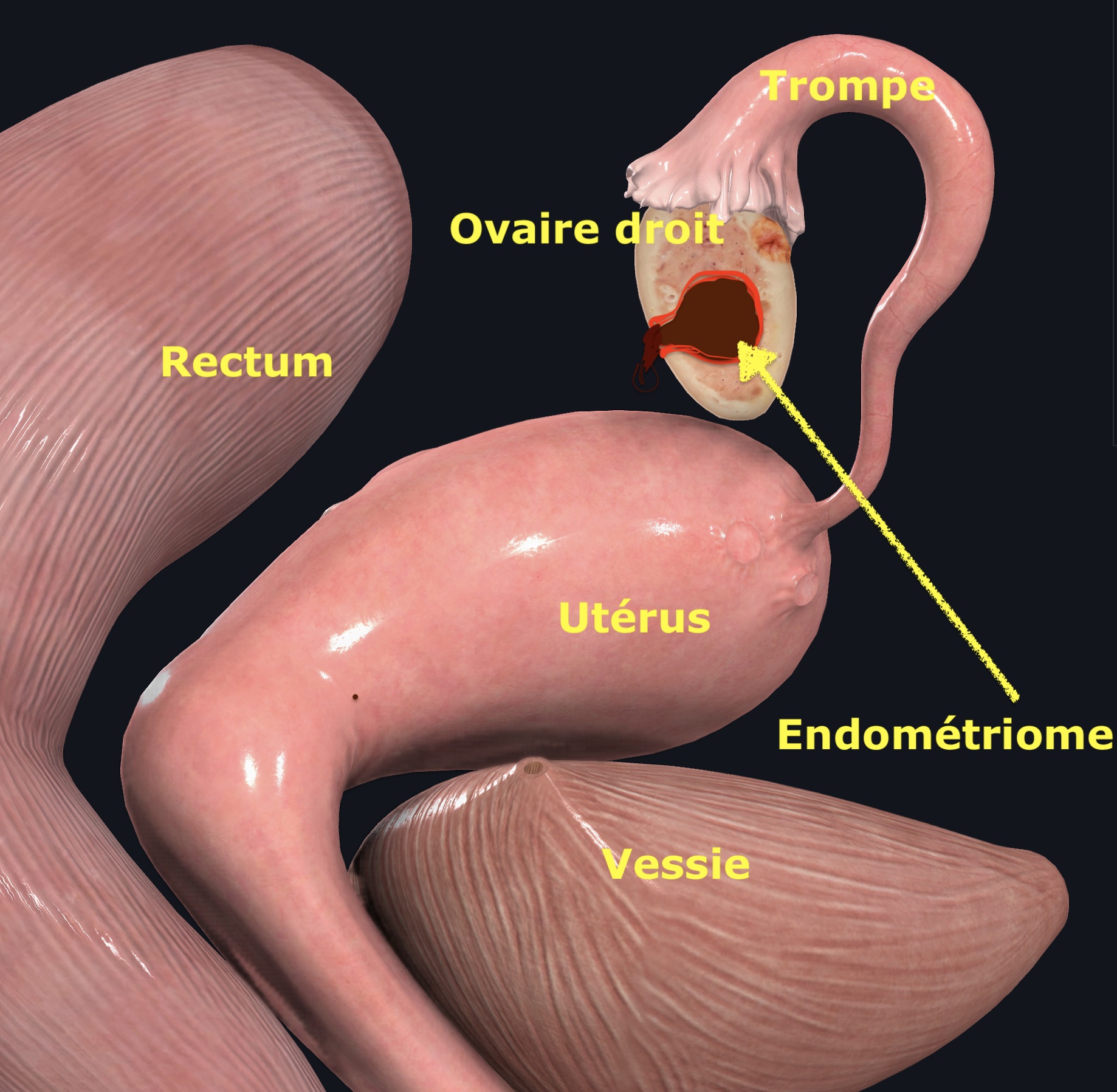SCIENTIFIC ARTICLES CONCERNING OVARIAN ENDOMETRIOSIS SURGERY PUBLISHED BY IFEM ENDO SURGEONS:
1: Roman H, Chanavaz-Lacheray I, Mircea O, Berby B, Dehan L, Braund S, Verspyck E, Puscasiu L. Large ovarian endometriomas are associated with high pre-operative anti-Müllerian hormone concentrations. Reprod Biomed Online. 2020 Sep 11:S1472-6483(20)30513-7. doi: 10.1016/j.rbmo.2020.09.008. Epub ahead of print. PMID: 33060013.
2: Darwish B, Roman H. When Opportunity Knocks, Grab Your Chance: Shall Ablation Be Rehabilitated in the Treatment of Endometrioma? J Minim Invasive Gynecol. 2020 Aug 20:S1553-4650(20)30386-1. doi: 10.1016/j.jmig.2020.08.007. Epub ahead of print. PMID: 32828900.
3: Pluchino N, Roman H. Oocyte vitrification offers more space for a tailored surgical management of endometriosis. Reprod Biomed Online. 2020 Nov;41(5):753-755. doi: 10.1016/j.rbmo.2020.07.012. Epub 2020 Jul 18. PMID: 32819840.
4: Roman H. Laparoscopic Sclerotherapy of Large Endometriomas: Is It a Reasonable Approach? J Minim Invasive Gynecol. 2020 Sep-Oct;27(6):1223-1224. doi: 10.1016/j.jmig.2020.05.011. Epub 2020 May 22. PMID: 32446970.
5: Roman H, Chanavaz-Lacheray I; l’équipe Rouendométriose. Le Centre expert de diagnostic et de prise en charge multidisciplinaire de l’endométriose de Rouen : une expérience pilote française [The Rouen Expert center in the diagnosis and multidisciplinary management of endometriosis: A French pilot experiment]. Gynecol Obstet Fertil Senol. 2018 Jul-Aug;46(7-8):563-569. French. doi: 10.1016/j.gofs.2018.06.006. Epub 2018 Jun 22. PMID: 29937108.
6: Roman H. Endometriosis surgery and preservation of fertility, what surgeons should know. J Visc Surg. 2018 Jun;155 Suppl 1:S31-S36. doi: 10.1016/j.jviscsurg.2018.03.002. Epub 2018 Apr 27. PMID: 29709485.
7: Roman H, Ballester M, Loriau J, Canis M, Bolze PA, Niro J, Ploteau S, Rubod C, Yazbeck C, Collinet P, Rabischong B, Merlot B, Fritel X. Synthèse des stratégies et prise en charge chirurgicale de l’endométriose, RPC Endométriose CNGOF-HAS [Strategies and surgical management of endometriosis: CNGOF-HAS Endometriosis Guidelines]. Gynecol Obstet Fertil Senol. 2018 Mar;46(3):326-330. French. doi: 10.1016/j.gofs.2018.02.020. Epub 2018 Mar 9. PMID: 29526793.
8: Chauvet P, Roman H, Gremeau AS, Canis M, Bourdel N. Prise en charge des endométriomes [Management of endometrioma]. Presse Med. 2017 Dec;46(12 Pt 1):1173-1183. French. doi: 10.1016/j.lpm.2017.10.004. Epub 2017 Nov 22. PMID: 29174658.
9: Stochino-Loi E, Darwish B, Mircea O, Touleimat S, Millochau JC, Abo C, Angioni S, Roman H. Does preoperative antimüllerian hormone level influence postoperative pregnancy rate in women undergoing surgery for severe endometriosis? Fertil Steril. 2017 Mar;107(3):707-713.e3. doi: 10.1016/j.fertnstert.2016.12.013. Epub 2017 Jan 12. PMID: 28089574.
10: Mircea O, Puscasiu L, Resch B, Lucas J, Collinet P, von Theobald P, Merviel P, Roman H. Fertility Outcomes After Ablation Using Plasma Energy Versus Cystectomy in Infertile Women With Ovarian Endometrioma: A Multicentric Comparative Study. J Minim Invasive Gynecol. 2016 Nov-Dec;23(7):1138-1145. doi: 10.1016/j.jmig.2016.08.818. Epub 2016 Aug 20. PMID: 27553184.
11: Motte I, Roman H, Clavier B, Jumeau F, Chanavaz-Lacheray I, Letailleur M, Darwish B, Rives N. In vitro fertilization outcomes after ablation of endometriomas using plasma energy: A retrospective case-control study. Gynecol Obstet Fertil. 2016 Oct;44(10):541-547. doi: 10.1016/j.gyobfe.2016.08.008. Epub 2016 Sep 21. PMID: 27665252.
12: Roman H. Politique de FIV systématique chez les patientes avec une endométriose profonde sévère et désir de grossesse : un support scientifique trop fragile pour des dommages collatéraux trop sévères [The policy of systematic first line IVF in patients with severe deep endometriosis and pregnancy intention: A thin scientific support with severe collateral damages]. J Gynecol Obstet Biol Reprod (Paris). 2016 Mar;45(3):211-3. French. doi: 10.1016/j.jgyn.2016.01.005. Epub 2016 Feb 18. PMID: 26900140.
13: Roman H, Quibel S, Auber M, Muszynski H, Huet E, Marpeau L, Tuech JJ. Recurrences and fertility after endometrioma ablation in women with and without colorectal endometriosis: a prospective cohort study. Hum Reprod. 2015 Mar;30(3):558-68. doi: 10.1093/humrep/deu354. Epub 2015 Jan 7. PMID: 25574030.
14: Roman H, Bubenheim M, Auber M, Marpeau L, Puscasiu L. Antimullerian hormone level and endometrioma ablation using plasma energy. JSLS. 2014 Jul- Sep;18(3):e2014.00002. doi: 10.4293/JSLS.2014.00002. PMID: 25392649; PMCID: PMC4208885.
15: Roman H, Auber M, Bourdel N, Martin C, Marpeau L, Puscasiu L. Postoperative recurrence and fertility after endometrioma ablation using plasma energy: retrospective assessment of a 3-year experience. J Minim Invasive Gynecol. 2013 Sep-Oct;20(5):573-82. doi: 10.1016/j.jmig.2013.02.016. Epub 2013 Jun 10. PMID: 23759693.
16: Bourdel N, Roman H, Mage G, Canis M. Chirurgie des endométriomes ovariens: de la physiopathologie à la prise en charge pratique pré-, per- et postopératoire [Surgery for the management of ovarian endometriomas: from the physiopathology to the pre-, peri- and postoperative treatment]. Gynecol Obstet Fertil. 2011 Dec;39(12):709-21. French. doi: 10.1016/j.gyobfe.2011.07.051. Epub 2011 Nov 10. PMID: 22079743.
17: Mokdad C, Auber M, Vassilieff M, Diguet A, Bourdel N, Marpeau L, Roman H. Évaluation par échographie tridimensionnelle de la réduction du volume des ovaires après kystectomie des endométriomes [Assessment of ovarian volume reduction with three-dimensional ultrasonography after cystectomy for endometrioma]. Gynecol Obstet Fertil. 2012 Jan;40(1):4-9. French. doi: 10.1016/j.gyobfe.2011.07.038. Epub 2011 Oct 20. PMID: 22019254.
18: Roman H, Auber M, Mokdad C, Martin C, Diguet A, Marpeau L, Bourdel N. Ovarian endometrioma ablation using plasma energy versus cystectomy: a step toward better preservation of the ovarian parenchyma in women wishing to conceive. Fertil Steril. 2011 Dec;96(6):1396-400. doi: 10.1016/j.fertnstert.2011.09.045. Epub 2011 Oct 22. PMID: 22019124.
19: Auber M, Bourdel N, Mokdad C, Martin C, Diguet A, Marpeau L, Roman H. Ultrasound ovarian assessments after endometrioma ablation using plasma energy. Fertil Steril. 2011 Jun 30;95(8):2621-4.e1. doi: 10.1016/j.fertnstert.2011.04.090. Epub 2011 May 31. PMID: 21621773.
20: Roman H, Pura I, Tarta O, Mokdad C, Auber M, Bourdel N, Marpeau L, Sabourin Vaporization of ovarian endometrioma using plasma energy: histologic findings of a pilot study. Fertil Steril. 2011 Apr;95(5):1853-6.e1-4. doi: 10.1016/j.fertnstert.2010.11.038. Epub 2010 Dec 17. PMID: 21168130.
21: Roman H, Tarta O, Pura I, Opris I, Bourdel N, Marpeau L, Sabourin JC. Direct proportional relationship between endometrioma size and ovarian parenchyma inadvertently removed during cystectomy, and its implication on the management of enlarged endometriomas. Hum Reprod. 2010 Jun;25(6):1428-32. doi: 10.1093/humrep/deq069. Epub 2010 Apr 8. PMID: 20378613.




